K.I.S.S or ‘Keep It Simple Stupid’ is a rule to live by.
It holds in almost every setting, including the classroom. STEM instructors have a lot to manage – TAs, students, labs, exams, grade books and their own research. With so much to juggle, simplifying wherever possible is crucial.
Jill Keeney, Charles A. Dana Professor of Biology at Juniata, knows this better than anyone. Her molecular biology courses focus on research methods, best practices and ethics and she’s been teaching with a digital method for five years. The switch from using paper lab notebooks in her courses to digital lab notebooks, however, wasn’t a change she took lightly.
“I was extremely hesitant to try a digital notebook at first,” she said. “This is my 26th year teaching so I was staunchly set in the paper notebook camp, that was just how things were done.” With LabArchives, Jill has learned that going digital doesn’t have to be complicated. It’s actually simpler and more efficient than using paper.
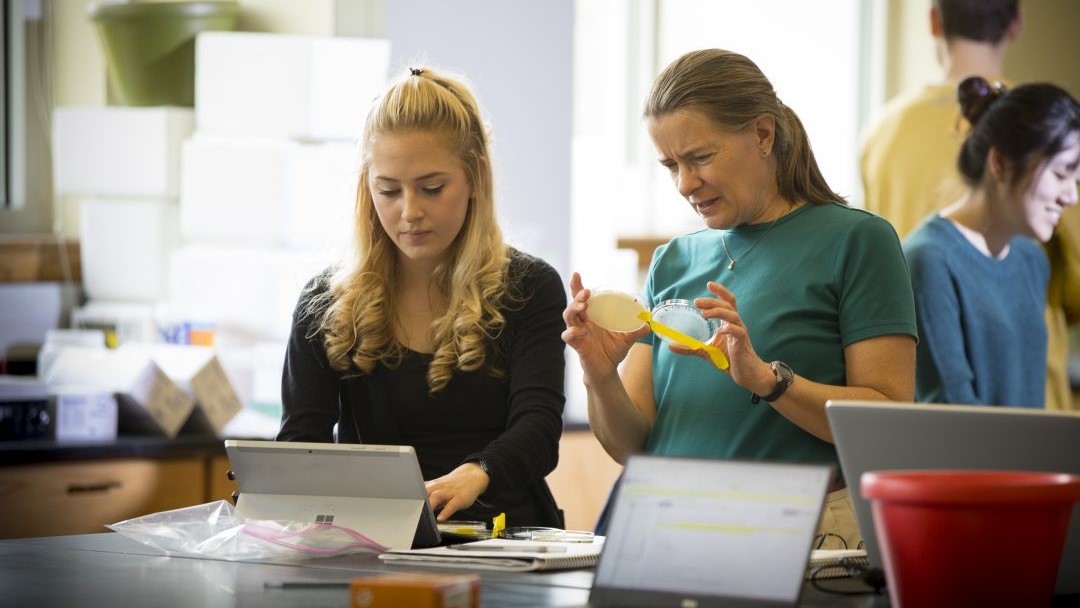 Juniata College students work with Professor Jill Keeney to conduct research for The Yeast ORFan Gene Project.
Juniata College students work with Professor Jill Keeney to conduct research for The Yeast ORFan Gene Project.KEEP IT EFFICIENT
Jill holds weekly feedback meetings with her students. With LabArchives she can review their work and prepare comments BEFORE they come to her office. As a result, the meetings are short, focused and make the most of everyone’s limited time.
LabArchives does offer in-platform feedback features, but Jill finds that in person works best for her. Instructors don’t have to leverage every feature available. It’s easy to pick and choose what features you want to use and go from there, just as Jill has.
“With teaching I started to realize that the tools and the way LabArchives is available online was very useful. I think for me it was a big realization that it’s actually really easy to use.”
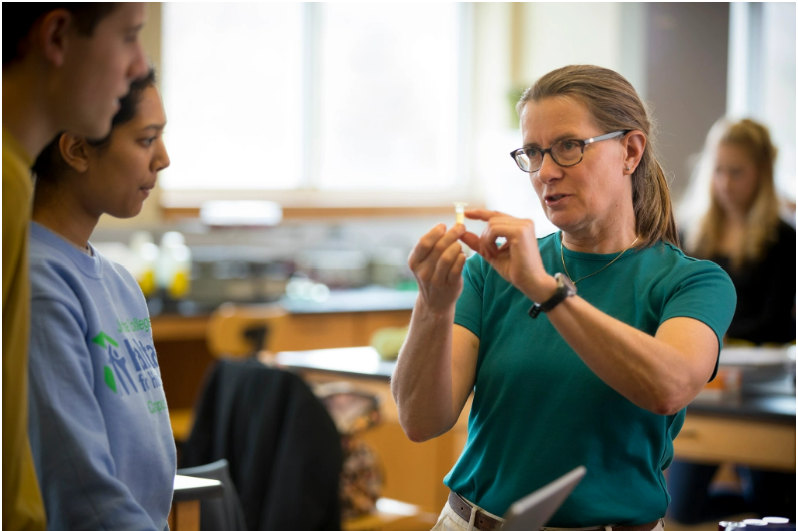 Jill meets with her students once a week to discuss their progress. She assesses their digital notebooks before they come in so she can give quick, in-person feedback.
Jill meets with her students once a week to discuss their progress. She assesses their digital notebooks before they come in so she can give quick, in-person feedback.KEEP IT UP TO DATE
According to Jill (and most professional lab managers), lab notebooks should be consistently maintained. They aren’t meant to be “caught up on.” Jill uses LabArchives to ensure that her students’ lab notebooks are truly being kept up rather than being hurriedly populated at the end of the semester.
To encourage this ‘industry best practice’ Jill grades her students’ lab notebooks anytime she wants. “I can just sit down with my rubric and click through notebooks checking that students have the materials listed for each day of lab and whatever else.” Her students, meanwhile, learn to keep organized, professional level lab notebooks.
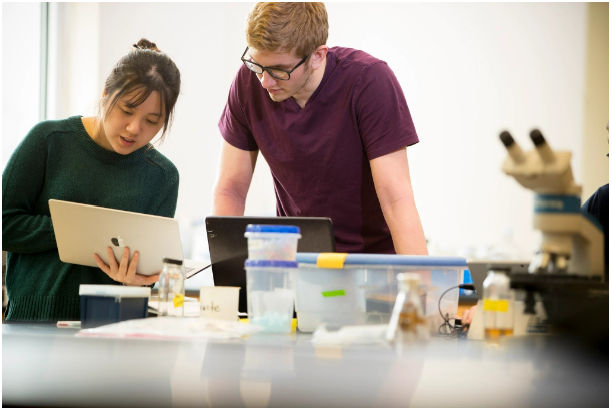 Students in Jill’s courses know to keep their digital notebooks up to date.
Students in Jill’s courses know to keep their digital notebooks up to date.KEEP IT CONSISTENT
In Jill’s course, each student has their own folder within the LabArchives course notebook. Within their folders, students complete all of their work. This is just another example of how working digitally allows Jill to pick and choose which workflows suit her best – most LabArchives instructors have their students each create their own notebook. Jill however “just sticks to the most basic basics and that works for (her).”
Students work within their own folders and know to create a new page for each day spent in the lab. Jill gives them a protocol within LabArchives so they don’t have to retype it. Students can quickly screenshot the protocol and add it to the page they are working on for reference and documentation. Everyone’s workflows are aligned in this digital first model.
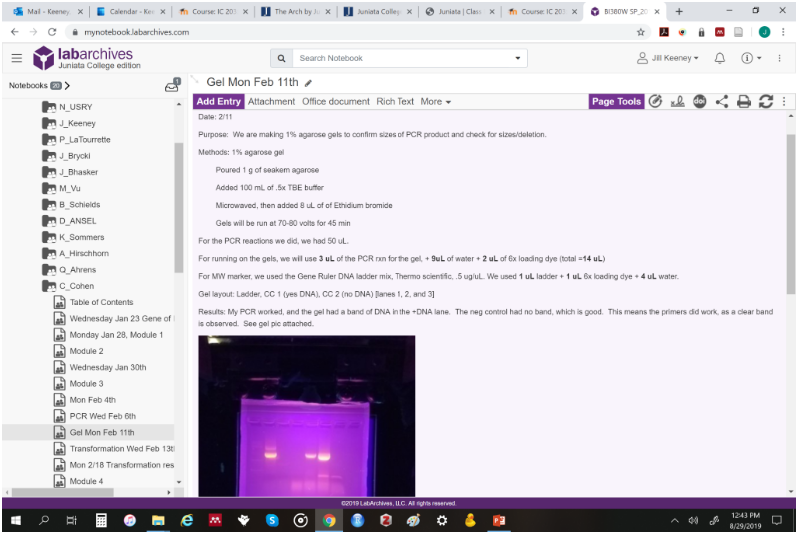 In Jill’s courses each student works within their own folder and creates a new page for each day of work done in the lab. This simple, digital workflow works for Jill and her students.
In Jill’s courses each student works within their own folder and creates a new page for each day of work done in the lab. This simple, digital workflow works for Jill and her students.KEEP IT CENTRAL
Another great benefit of teaching digitally? Jill doesn’t have to worry about notebooks leaving the lab and not coming back. Student work is always secure and readily accessible. No one has to fuss with lost papers, water stained notes, tattered pages or worst of all – lab notebooks that have been lost forever in messy college dorm rooms.
This goes for all notebook content, too. With LabArchives students can add photos to their notebooks in seconds. In the past, Jill’s students had to take a hard copy picture, scan it, print it and attach it to their paper notebook. But these sheets were usually hastily glued in and would get lost themselves, leaving gaps in student notebooks. Now students just take a picture on their phone and upload it via the app or web platform. It takes about two seconds.
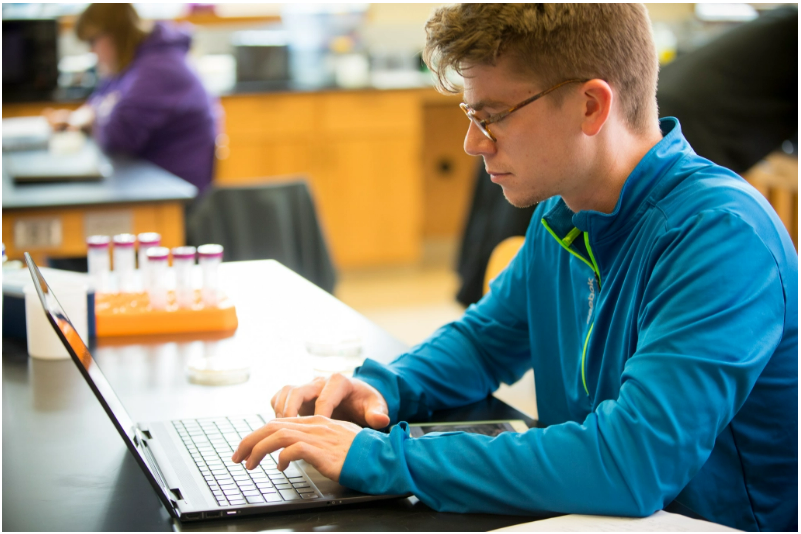 With everything in one central digital location, students don’t lose their work… ever.
With everything in one central digital location, students don’t lose their work… ever.KEEP IT FOR LATER
While paper notebooks are liable to get lost during the course of the semester, they’re even more likely to be lost once the semester ends. Students often misplace their past coursework meaning they lose access to all of their hard work and learning. The LabArchives notebook export feature takes care of this problem entirely for Jill and her students. Students quickly download a PDF of all of their work at the end of the semester. These often end up being quite useful to students when they apply for graduate school and professional research jobs.
KEEP IT GOING
“The challenges will always be the same,” Jill said, “getting students to be complete and report everything they are doing is a challenge.” But when given a tool that is simple and easy to use, they are more likely to do just that.
Students, Jill noted, really like working with LabArchives. She’s never gotten any negative feedback and once they move on from her course, they’re already aces at using an industry tool. Her students are more than a few steps ahead when they enter the professional world – working digitally is a win win for everyone involved.



















